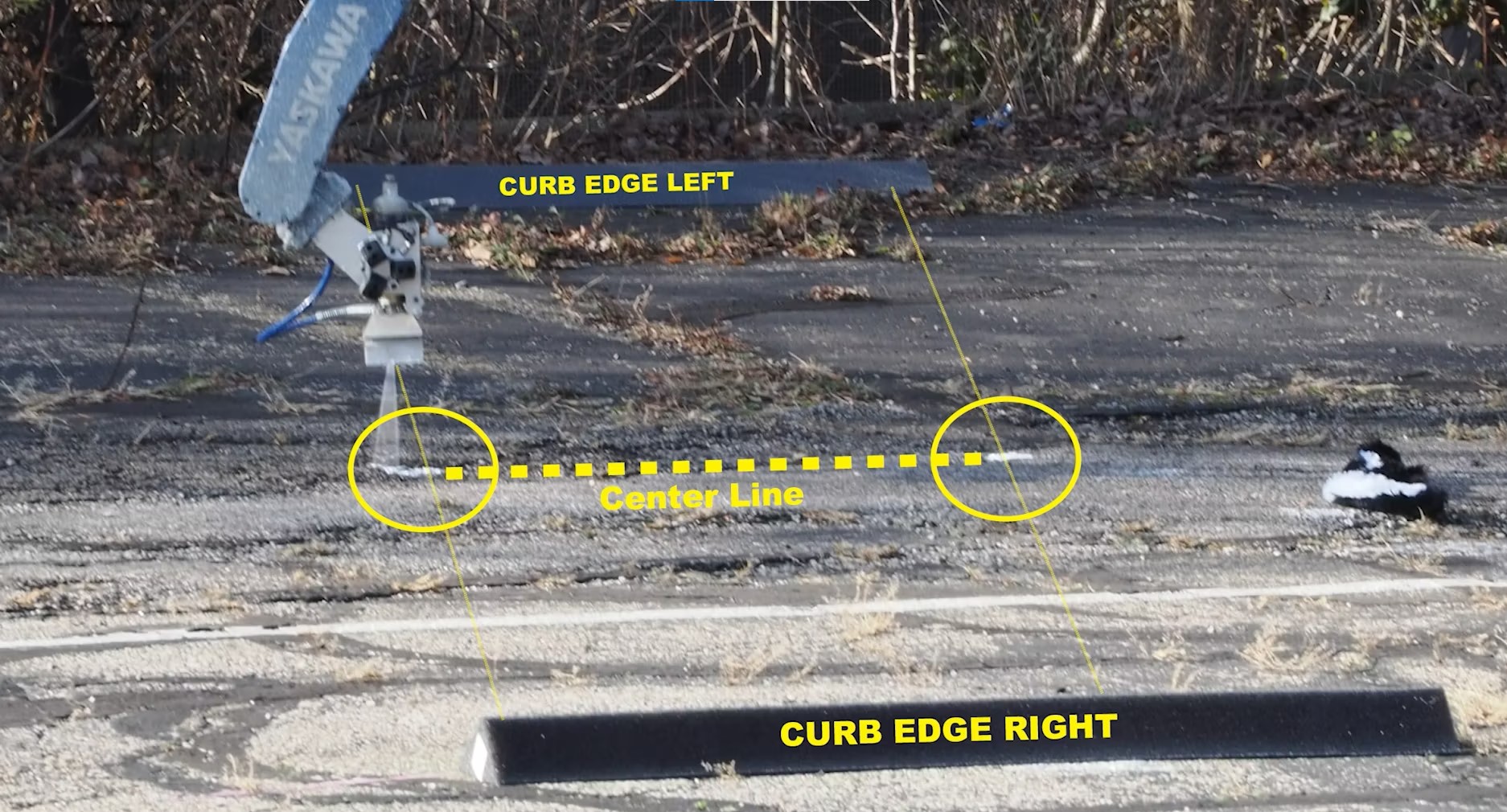
Last Fall, we had the opportunity to watch a crew of experienced local pavement marking contractors at work in our local Metroparks after a full repave of one of the parkways. Miguel, the crew foreman, had to lay out the centerline of the curving road. As if the curves weren’t troublesome enough, additional complicating factors included an adjacent (and as-yet unmarked) two way bike lane along one side of the road, a left-turn pocket at the mouth of the road, and an uncompacted berm along the other side.
Miguel knew how to handle the situation. He and his trusty measuring wheel began a dance which lasted a good deal of the day. Miguel would find the true south edge of the pavement by working his right boot under the uncompacted berm. When the outside of his boot found the drop-off, he would mark his right instep’s position with his spray can, pivot north, reset his wheel to zero, then measure to the north side. A bit of quick mental math allowed him to subtract the bike lane’s width, then he’d head back towards his southern mark, leaving an edgeline mark between the travel and bike lanes, and spraying a dot at the centerpoint as he crossed back.
He repeated this process dozens, then ultimately hundreds of times throughout the morning, all in live traffic. (To be fair, his crewmates did their best to slow down the drivers, but it was scary to watch nonetheless.) We did, however, come to our own answer to that famous question of why the chicken crossed the road: it was obviously trying to keep up with Miguel!
RoadPrintz is committed to making roadway work zones safer, so we developed a centerline layout function. Basically, the truck-mounted robot first looks from side to side, stitching together a multi-camera view. The operator, working from within the safety of the truck cab, can then align each end of a line-image with the sides of the road. A single button press then paints a small guide mark dead center between these points. The operator can then reposition the line-image a bit further down the road and repeat the sequence, producing centered dots as close or far apart as may be desired. These markings are then used to guide the long-line truck as it paints the centerline. (Other features allow the pavement to account for bike lanes, turn lanes, odd numbers of lanes, etc.)

